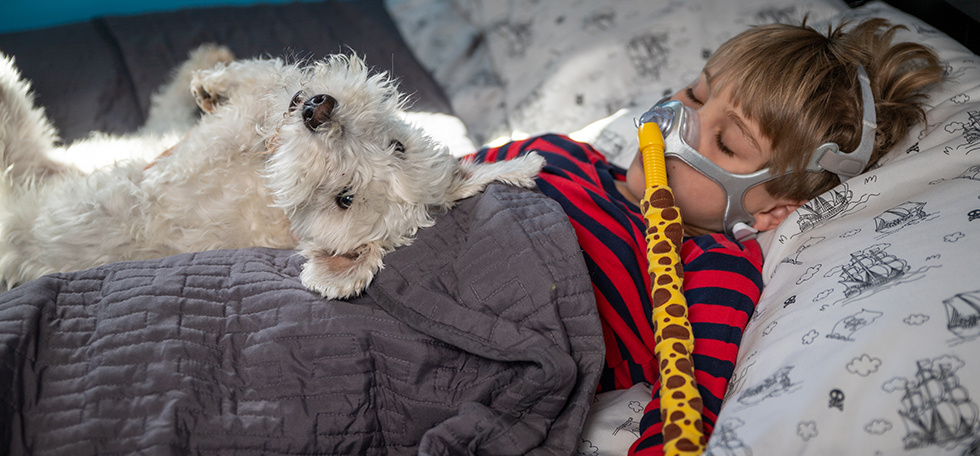Sleep Apnea in Children

Lack of good quality sleep is just as important in children as in adults and the number of children with sleep disordered breathing is surprisingly high. Depending on the child’s age, the symptoms can vary. It can cause daytime sleepiness like it does in adults, but it can also cause hyperactivity and inattention leading to behaviour problems.
Children most often experience OSA due to large tonsils and adenoids that block the airway at nighttime when their airway muscles relax. Similar to adults, obesity can be a risk factor that may be related to OSA.
At night, parents notice symptoms like:
- Snoring
- Pauses in breathing
- Unusual sleep positions. For example: neck extended with head back or sitting up with mouth open
- Restless sleep
- Night sweats
- Snorting, coughing or choking
- Mouth breathing
- Bedwetting
- Night terrors
During the day, parents may notice:
- Mouth breathing with trouble breathing through the nose
- Difficulty paying attention in school/learning problems
- Poor performance in school
- Behavioural problems
- Hyperactivity even at home
- Excessive sleepiness
- Depressed mood
- Morning headaches
Other factors that may put children at risk for sleep apnea include:
- Uncontrolled asthma or other airway diseases
- Allergic rhinitis or nasal allergies
- Acid reflux or GERD
There are other children with genetic disorders that lead to severe problems in the ability to breathe. These may also cause central sleep apnea.
- Neuromuscular or skeletal disorders
- Retrognathia (small jaw)/Pierre Robin syndrome
- Trisomy 21/Down’s Syndrome
- Chiari malformation
If your child is experiencing symptom of OSA, ask your family doctor or pediatrician for a referral to a pediatric respirologist who specializes in sleep medicine.
Treatment
The most common treatment for OSA in children is the surgical removal of the tonsils and adenoids called an adenotonsillectomy. This is the initial treatment for most children with sleep apnea and is very effective. Nasal steroid sprays may be trialled to determine if decreasing the airway swelling will reduce apnea episodes.
Despite these treatments, some children will still need treatment with CPAP therapy, similar to adults. Child-specific masks are available and are similar to adult masks, just smaller. Depending on the illness, other therapies may also be required, and your Pediatric Respirologist can help you.
